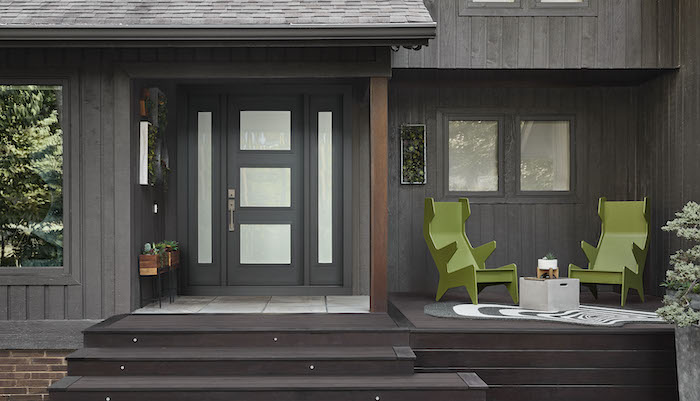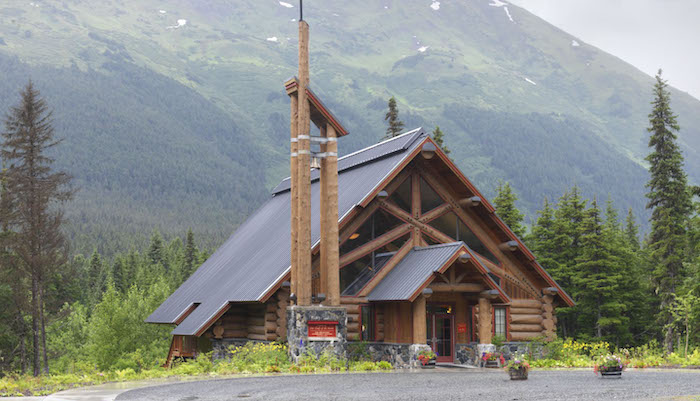Today’s savvy homeowners appreciate the growing number of interior and exterior door choices tailored to align with popular styles and trends.
The once-quiet interior and exterior door category is now in the design spotlight and exploding with variety. Staying on trend is key to offering the best possible product advice in this increasingly fast-paced category.
For homeowners and builders alike, there have never been so many choices to consider for interior and exterior doors. This once-quiet corner of the home remodeling industry has been transformed into a dynamic, fast-paced category. Staying on trend and offering the best possible product advice means finding the bull’s-eye in a cornucopia of options. Sure, there are a multitude of variables to consider and having lots of options certainly helps match style and need but having a plan to find the right doors for every project is the surest path to success. Speaking the same language when it comes to available styles goes a long way.
Set the tone by speaking to the architectural style
You know good design when you see it, but can you describe it in terminology that will be understood by your clients? Recognizing and articulating the architectural style establishes guidelines from the beginning. To help clients along in the process, tools like a JELD-WEN style quiz can help everyone get on the same page. Regarding the changing nature of residential design, Parker Shanahan, Head of Design and Development at Rufty Homes, says, “Architecture is more diverse here than it used to be. We were a very traditional market 25 years ago. Now we have traditional and modern.”
Sharing this knowledge and understanding about styles also helps influence the builder and homeowner at critical decision stages.
Today’s homeowners are savvy online sponges. They actively investigate their project. Using website resources like Houzz, Porch, Dwell, Bright/Bazaar, Martha Stewart, and Southern Living transforms their design knowledge and accelerates trends. With this help, they can easily identify what’s hot and what’s timeless.
Professionals looking to stay current can visit pro-only websites like REMODELING and Professional Remodeler, along with joining organizations like the National Association of the Remodeling Industry (NARI) and attending NARI’s online, regional, and national events. The NARI blog is another great resource, offering a constantly updated source of project ideas and trend monitoring.
Spotlighting the latest in interior and exterior doors
Today, four architectural trends have emerged as time-tested interior and exterior door classics:

A classic example of the coastal-style interior door made using a molded wood composite with ProCore(TM) to reduce sound.
1. Farmhouse style is known for rustic charm and modern simplicity
Doors in this style can feature plank detailing with craftsman touches or glass and simple grille patterns. Color is neutral or muted tones. Multiple wood finishes emulate the farmhouse style, as are chunky knits and grain sacks. Expect unfinished or stripped wood. Architectural elements like real or even faux exposed beams, corbels, pillars, hardwood floors, and shiplap family well with the farmhouse style of doors.
2. Coastal style creates a year-round summery feel
Imagine natural light, soft tones, and a clean, natural aesthetic with plenty of wood touches. When it comes to color, white is king. Accent colors include neutrals with bursts of bright color. Natural materials like sheer curtain panels offer a billowy texture, and wood is typically light or whitewashed with the coastal style.
3. The updated traditional style is a mash-up of classic and new
This style is filled with versatility and fits a wide range of entry-door formats. Colors like teal, burgundy, gray, and taupe contrast nicely with lighter shades. Speaking of contrast, look for a blend of historic, traditional architecture; interiors; and furnishings with a clean, uncluttered look distinguished by light walls and modern technology. Updated traditional style is all about harmonizing the space. Using color, shape, and scale in the form of accent chairs, table lamps, decorative pillows, and end tables creates a sense of balance.
4. Modern style embodies clean, straight lines and uncluttered spaces
White, shades of beige, and black set the stage along with the right earthy accents. Picture soft fabrics, metal, warm wood, and concrete integrated as a counterpoint to the lightness of the modern style. Wood is frequently used to deliver a contrasting effect such as in an entry door or sanded floor. “Modern architecture is strong right now. When people are looking at doors or windows, they want narrower lines. Glass plus frame,” says Shanahan.
Look to building material manufacturers for up-to-date product knowledge and ideas. JELD-WEN, offers contractors a wealth of resources and online tools to help advance each project, including a comparison chart, style guides, continuing education unit (CEU) courses, case histories, how-to videos, and technical documents. Help with installation and finishing is also available.



